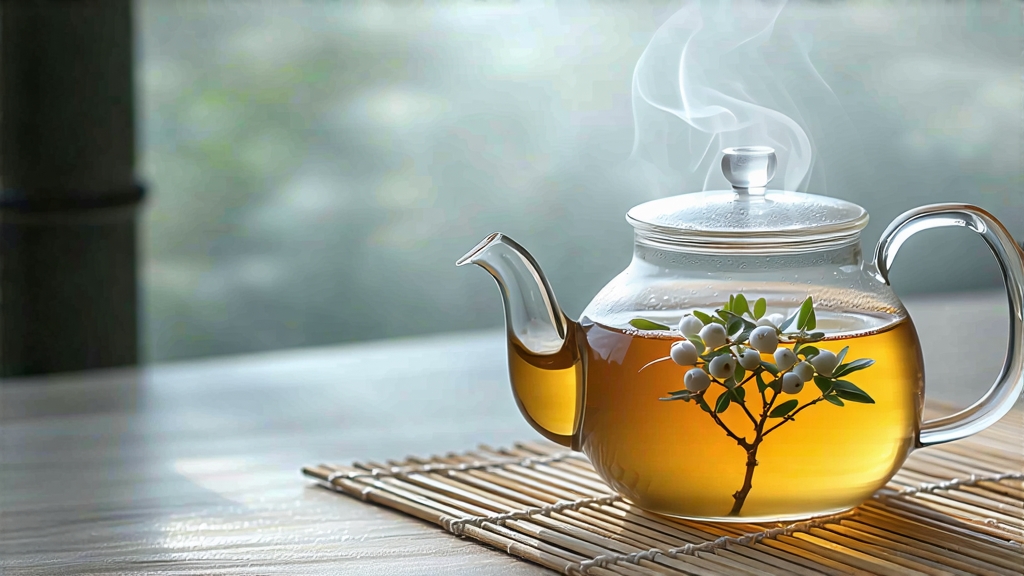
White tea is the most minimally treated of all China’s six major tea families, and within that quiet realm White Hair Silver Needle—Bai Hao Yin Zhen in Mandarin—stands as the purest expression of leaf and time. To the uninitiated it can look almost too delicate to be tea: straight, silvery spears that seem better suited to a jeweler’s tray than to a teapot. Yet one gentle infusion releases a liquor so luminous, so quietly perfumed, that newcomers often whisper “I didn’t know tea could taste like this.” This essay invites the international reader to explore the history, terroir, craftsmanship, and quiet ritual that elevate White Hair Silver Needle from mere beverage to liquid meditation.
-
Historical whispers
The first verifiable record of “silver needle” appears in a Song-dynasty treatise on tribute teas (1085 CE), but those leaves were pressed into cakes; the loose, downy buds we recognize today emerged during the late Qing, when export houses in Fuzhou began shipping them to Europe alongside jasmine-scented greens. British and Dutch merchants christened the tea “Pekoe Tips,” confusing the Chinese term bái háo (white down) with the Indian grading word “pekoe.” By 1891 the buds were winning gold medals at the London International Tea Fair, and emperors, duchesses, and poets alike hoarded the limited harvest. In the twentieth century civil war and trade embargoes nearly erased the style; only a handful of state-run farms in Fujian kept the craft alive. When China reopened in the 1980s, tea masters returned to the old groves, and Silver Needle re-entered the global imagination as the archetype of Chinese elegance. -
Terroir: two counties, two personalities
Authentic Silver Needle is produced in only two micro-regions. Fuding, on Fujian’s northeastern coast, enjoys a subtropical maritime climate: morning fog rolling off the East China Sea moderates ultraviolet light, encouraging slow bud growth and a high amino-to-catechin ratio. The resulting liquor is creamy, almost marine, with notes of fresh lychee and steamed rice. Zhenghe, 150 km inland, sits at 800 m on volcanic soil; cooler nights and larger diurnal swings concentrate fragrant terpenes, yielding a slightly darker brew reminiscent of orchid, honey and winter melon. Purists debate which county is “true” Silver Needle, yet both enjoy protected-origin status under China’s GI system, much like Champagne in France. -
The art of “two witherings and one bake”
Unlike green tea, Silver Needle is never pan-fired or rolled. The process begins before dawn on still March mornings, when pickers pluck only the unopened bud and the immediately adjacent half-centimeter of stem. A skilled worker gathers barely 500 g per hour; 30,000 buds make one kilo of finished tea. The harvest is spread on bamboo trays and left to wither in shade for 36–48 h, during which enzymatic oxidation proceeds at a glacial pace, turning grassy aldehydes into soft, sweet ketones. Next comes a short sun-withering of 20–30 min—just long enough for surface moisture to evaporate—followed by a final low-temperature bake at 40 °C. The entire cycle respects the Taoist maxim wu wei: action through non-action. Over-manipulate the leaf and you bruise the down; under-dry it and you invite musty off-notes. Masters gauge readiness by touch: a bud should snap, not bend, yet still feel cool against the cheek. -
Grades and market reality
Chinese export codes divide Silver Needle into four grades: Supreme, Special, Grade 1, and Grade 2. Supreme consists entirely of needle-length buds plucked within the first five days of spring; Special allows 10 % shorter buds; lower grades may contain traces of leaf. Unfortunately the global boom in white tea has encouraged counterfeit “needle” made from autumn-picked buds of Yunnan large-leaf varietals; these oxidize faster and lack the signature white velvet. Reputable sellers provide harvest-date certificates and microscopic photos: authentic Fujian buds show 7–10 mm of uniform down, a tiny fish-hook curve at the tip, and a single tiny petiole scar. -
Brewing: less is more